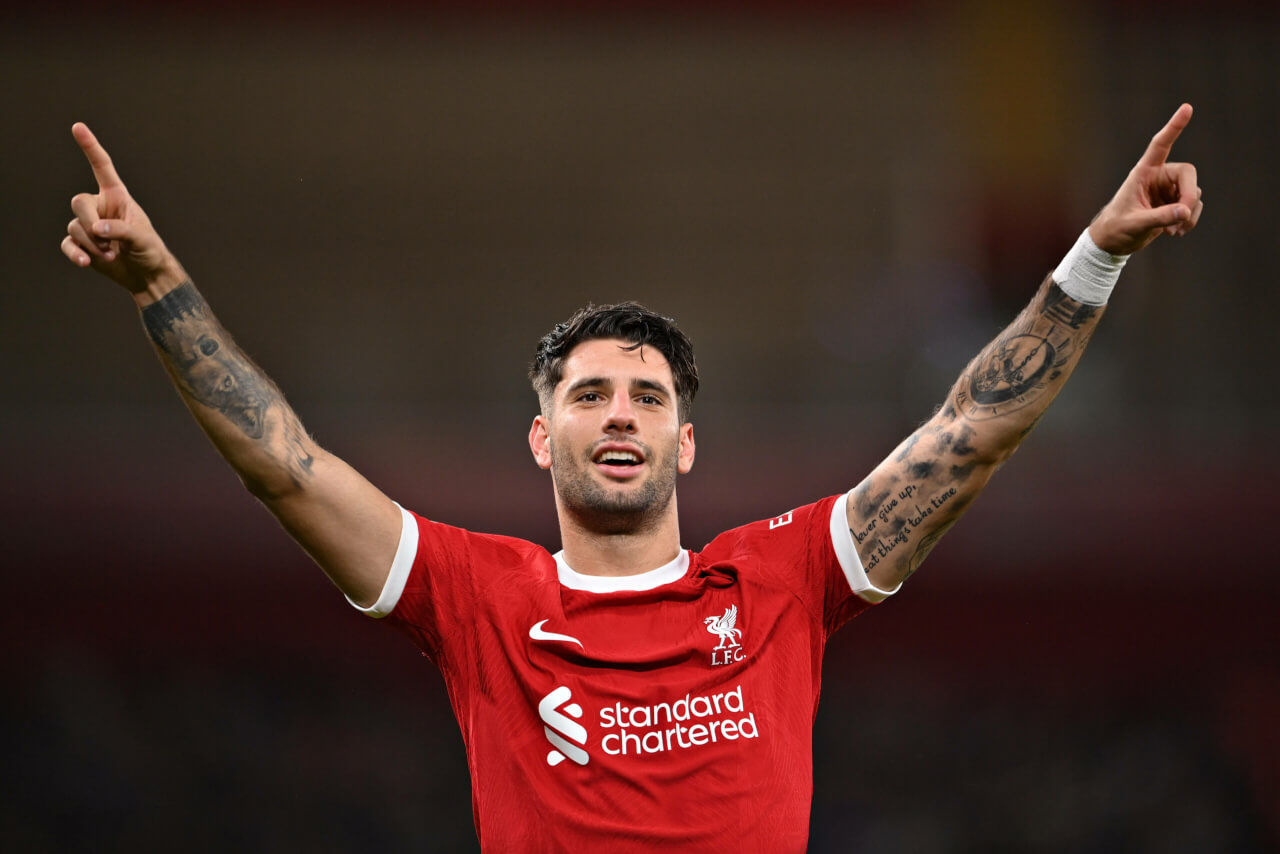Dominik Szoboszlai’s Void and Liverpool’s Tactical Quandaries: A Reflection
In the intricate ballet of football, the absence of key players often underscores the depth and resilience of a squad. Ian Doyle’s insightful article in The Echo vividly captures Liverpool’s recent stumble against Arsenal, a game that not only highlighted Mohamed Salah’s absence but also brought to the fore the challenges faced by Ryan Gravenberch in filling Dominik Szoboszlai’s boots. This piece aims to dissect Liverpool’s tactical dilemma, the defensive woes, and the implications for their title aspirations.

Liverpool’s Offensive Conundrum
Salah’s absence was felt more acutely than ever in the loss to Arsenal. The Egyptian’s knack for pivotal goals had previously salvaged points for Liverpool, as Doyle reminds us, “the Egyptian, don’t forget, had struck the equaliser in the Anfield fixture between the teams in December” – a testament to his irreplaceable impact. Diogo Jota’s struggles on the right flank underscored the intricacies of replicating Salah’s influence, with Jurgen Klopp voicing frustration over the lack of productive combinations down that side.
The anonymity of Ryan Gravenberch in attempting to step into Szoboszlai’s shoes was particularly concerning. As Doyle notes, despite previous advancements, Gravenberch’s performance against Arsenal marked a regression, highlighting the steep learning curve awaiting the young Dutchman. This scenario beckons a larger question: how Liverpool can adapt tactically to the absence of key players without compromising their offensive fluidity?
Defending the Fort: A Rare Off-Day
Defensive solidity has been Liverpool’s hallmark, yet the Arsenal match exposed uncharacteristic vulnerabilities. Trent Alexander-Arnold’s return was marred by defensive lapses, a reminder of the challenges that come with regaining match fitness. Doyle’s observation that “Alexander-Arnold appeared very much a player who hadn’t seen much action of late” encapsulates the right-back’s struggles to recalibrate to the pace of Premier League football.
Moreover, the defensive unit, including Virgil van Dijk and Ibrahima Konate, experienced rare moments of disarray, culminating in a game-changing error and a red card. This defensive blip serves as a cautionary tale that even the most stalwart defences are not immune to off-days, underscoring the importance of maintaining focus and coordination at the back.
Navigating the Mini-League and Title Prospects
Liverpool’s aspirations for silverware are invariably linked to their performances against direct rivals. Doyle’s analysis points to a troubling trend: Liverpool accruing merely seven points in seven games against the so-called big six. This inefficacy in crucial matches could be the Achilles’ heel in their title chase.
The silver lining, as Doyle suggests, lies in Liverpool’s remaining fixtures, with key battles at Anfield presenting an opportunity to rectify their course. However, the mental fortitude of Klopp’s “mentality monsters” is under scrutiny, especially given their mixed responses to previous setbacks this season.
Conclusion: Adaptation and Resilience as Key
Liverpool’s recent defeat to Arsenal, as depicted by Ian Doyle, serves as a multifaceted lesson in adapting to absences, the indispensability of defensive cohesion, and the crucible of top-tier competition. As the Reds navigate the remainder of the season, their ability to adjust tactically, shore up their defence, and seize critical points against rivals will dictate their fate in the title race.
In a season defined by narrow margins, Liverpool’s journey is a testament to the Premier League’s relentless demands and the perpetual quest for excellence. Doyle’s article not only captures a momentary lapse but also invites reflection on the broader challenges facing top-tier clubs in their pursuit of glory.




